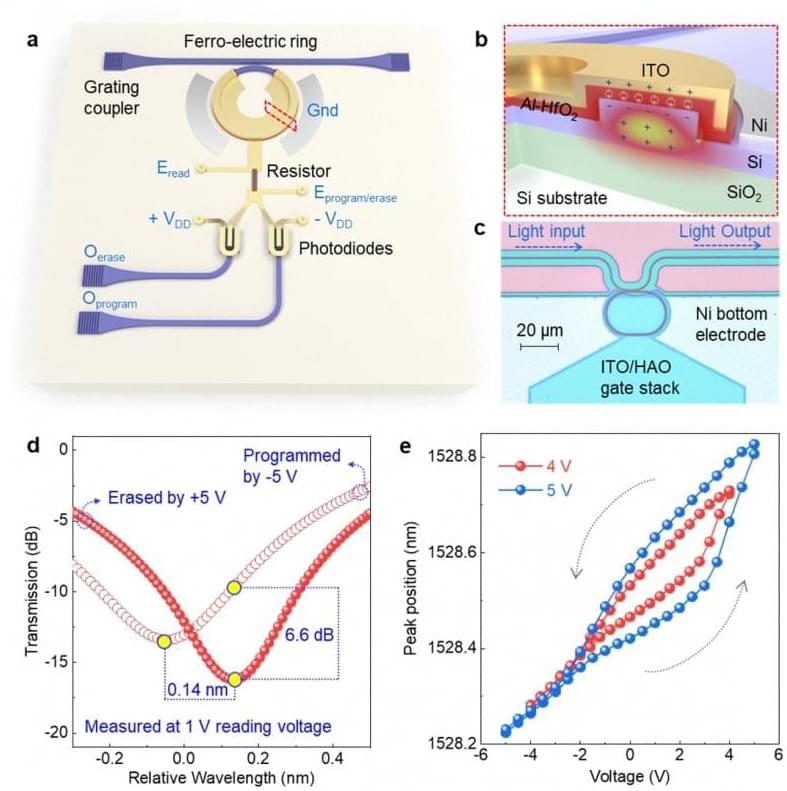An international research team, led by Professor Gong Xiao from the National University of Singapore, has achieved a groundbreaking advancement in photonic-electronic integration. Their work, published in Light: Science & Applications (“Thin film ferroelectric photonic-electronic memory”), features Postdoc Zhang Gong and PhD student Chen Yue as co-first authors. They developed a non-volatile photonic-electronic memory chip utilizing a micro-ring resonator integrated with thin-film ferroelectric material.
This innovation successfully addresses the challenge of dual-mode operation in non-volatile memory, offering compatibility with silicon-based semiconductor processes for large-scale integration. The chip operates with low voltage, boasts a large memory window, high endurance, and multi-level storage capabilities. This breakthrough is poised to accelerate the development of next-generation photonic-electronic systems, with significant applications in optical interconnects, high-speed data communication, and neuromorphic computing.
As big data and AI grow, traditional computers struggle with large-scale tasks. Photonic computing offers potential, but interfacing with electronic chips is challenging. Current storage can’t handle dual-mode operations, and OEO conversion adds losses and delays. A non-volatile memory for efficient data exchange between photonic and electronic chips is essential.
